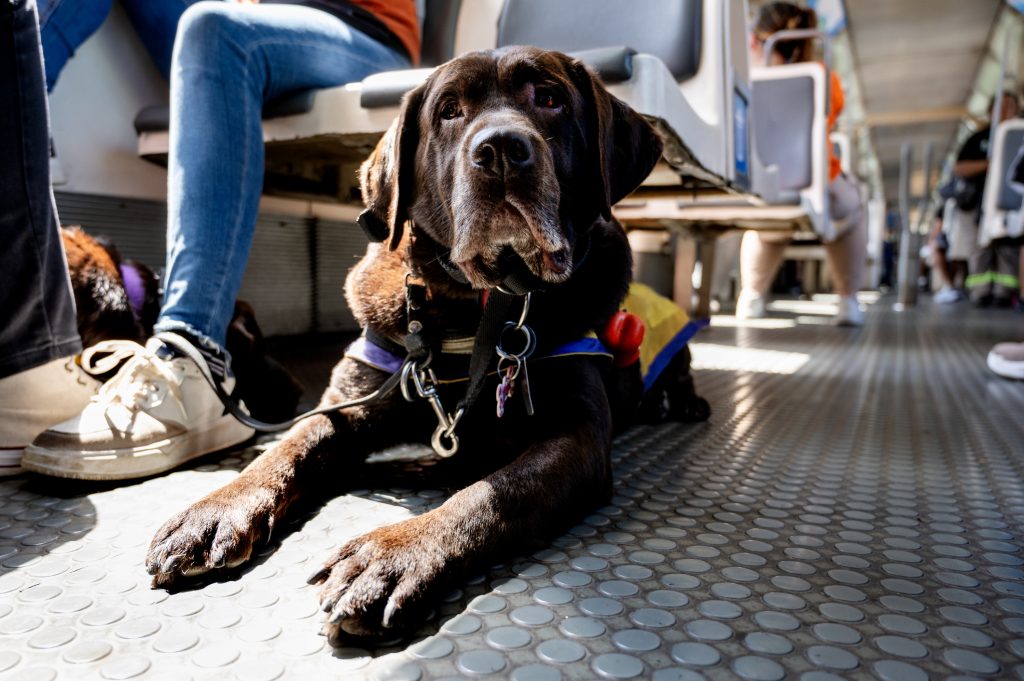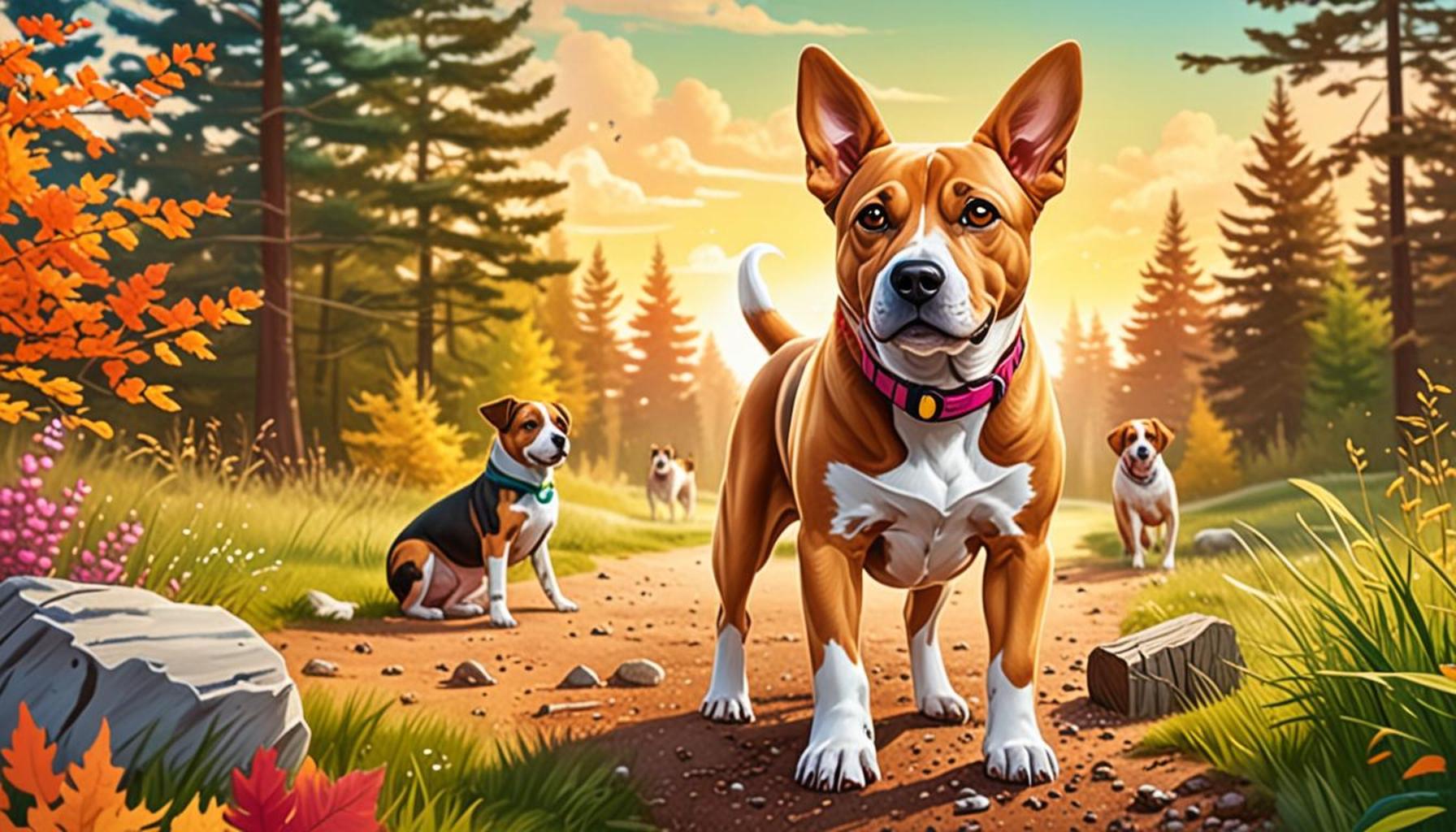Training Strategies for Senior Pets: Adapting to Special Needs

Understanding the Unique Challenges of Senior Pet Training
As pets advance into their senior years, their needs change, necessitating a more nuanced approach to training. Aging pets often experience various physical and cognitive challenges that can complicate their learning process. Recognizing these unique needs is imperative to deploy effective training strategies that are tailored to their current condition, ultimately contributing to a fulfilling relationship between owner and pet.
- Decreased mobility: Senior pets may struggle with arthritis or joint pain, making it harder for them to perform physical tasks. This could affect their willingness to respond to commands that require movement, such as “come” or “sit.”
- Reduced energy levels: As pets grow older, their energy often diminishes. They may tire more easily during play or training sessions, making lengthy training difficult. Shorter, focused sessions can be more effective.
- Cognitive decline: Some senior pets experience cognitive dysfunction syndrome, akin to dementia in humans. They may have difficulty remembering commands or following routines. It’s essential to keep training sessions lively and engaging to stimulate their minds.
- Heightened anxiety: Aging can bring about increased anxiety due to various factors, including medical conditions or changes in the household. An anxious pet might be less receptive to training, fearing new experiences or environments.
Every senior pet is unique, often exhibiting a range of disabilities or health issues that directly impact their ability to learn. Considerations like age-related stiffness or diminished eyesight can significantly alter how they perceive and respond to commands. Consequently, employing gentle and patient training methods becomes crucial to accommodate their physical and emotional well-being.
Essential Training Strategies
Implementing effective training strategies tailored to senior pets involves several key tactics that ensure both effectiveness and compassion:
- Positive reinforcement: Reward-based methods are particularly beneficial for senior pets. Utilizing treats, praise, or gentle petting boosts their motivation and fosters an enjoyable training environment, enhancing their willingness to learn.
- Short sessions: Keeping training sessions brief—about 5 to 10 minutes—can help prevent fatigue and frustration. This way, pets can absorb information without overwhelming their senses.
- Consistent routines: Familiarity can significantly aid memory retention. Establishing consistent training routines not only helps pets remember cues but also instills confidence, reducing anxiety as they learn to expect what comes next.
Exploring these tailored strategies not only enhances communication with senior pets but also strengthens the bond shared between owner and companion. With the right approach, adapting training techniques can create a fulfilling and enriching experience for both you and your aging friend. By focusing on their individual needs and employing mindful training practices, you ensure that your senior pet enjoys their later years with dignity, joy, and engagement.
DISCOVER MORE: Click here to learn about how age affects pet nutrition

Implementing Tailored Training Techniques
As pet owners, understanding and responding to our senior companions’ needs can significantly enhance their quality of life. Effective training strategies for senior pets must be adaptable and considerate of their unique challenges. With precision, patience, and a deep understanding of their physical and emotional states, we can forge a more engaging and rewarding training experience.
One of the primary strategies in training senior pets is the use of positive reinforcement. This method relies on rewarding desirable behaviors, which is particularly effective for older animals. Senior pets might have experienced many different training techniques throughout their lives; thus, they often respond best to methods that foster positivity. Rewards can range from high-value treats to verbal praises or even a gentle scratch behind the ears. By emphasizing the good behaviors, owners build trust and encourage their pets to engage actively in the training process.
Encouraging Engagement Through Variety
Keeping training sessions interesting is crucial, especially for those pets grappling with cognitive decline. Routine and familiarity facilitate learning, yet introducing variety can invigorate their enthusiasm. Incorporating various commands or activities can help reignite their motivation and curiosity. For example, swapping traditional command training with tactile play or scent games may stimulate their minds in engaging ways and promote sensory exploration.
Additionally, environmental adjustments can make a significant difference during training. Ensuring your training space is quiet and free from distractions allows senior pets to focus better. It’s also vital to consider their comfort; placing soft mats or cushions where they can sit or lie down during sessions can reduce physical strain and encourage longer participation.
- Focus on low-impact exercises: Engaging senior pets in training through gentle movements that don’t strain their joints—like “shake hands” or “touch” using a target stick—can be beneficial.
- Use visual cues: Many senior pets may experience hearing loss. Utilizing hand signals as a complement to verbal commands can help reinforce training. This dual approach supports their understanding, even if they struggle with auditory processing.
- Incorporate memory aids: Using familiar objects or toys during training can aid recall and reduce anxiety. Establishing an activity using their favorite ball or blanket can help connect the dots for them.
Engagement and reinforcement strategies extend beyond simple instruction; they encompass the quality of interactions and the emotional link with senior pets. As we embark on this journey of adapting training techniques for our aging companions, we open the door to deeper communication and mutual understanding. Ultimately, taking the time to fine-tune these training strategies not only enhances their learning but also enriches the shared experiences that form the cornerstone of a fulfilling partnership in their golden years. With patience and compassion, pet owners can lead the way in paving an enjoyable path for senior pets to thrive.
| Category | Details |
|---|---|
| Positive Reinforcement | Utilizing treats and praise to encourage desired behaviors, which can be particularly effective for senior pets with special needs. |
| Customized Training Plans | Creating individualized training strategies tailored to specific health considerations ensures better learning outcomes and promotes overall well-being. |
When considering training strategies for senior pets, it is crucial to focus on their unique physical and cognitive challenges. For instance, older dogs may experience joint pain, making it difficult for them to perform advanced commands. A gentle approach, utilizing short sessions and incorporating regular breaks, can greatly enhance their learning experiences.Another significant strategy involves socialization. Ensuring that senior pets remain engaged with both humans and other animals can help combat loneliness and improve mental stimulation. Activities such as supervised playdates or visiting pet-friendly stores can be beneficial.Moreover, incorporating sensory enrichment—like different textures and scents—can enhance cognitive function in senior pets. Training should also adapt to each pet’s pace, allowing for gradual progress that accounts for their individual capacities. These strategies create a nurturing environment that respects the needs of senior pets while promoting their physical and emotional health.
DISCOVER: Click here to uncover inspiring stories
Fostering Physical and Mental Well-Being
As pets age, their physical abilities often decline, which can impact their training engagement. It’s essential to provide a training regimen that not only challenges their minds but also accommodates their physical limitations. Adopting gentle activities grounded in fun and low-impact exercises can help keep senior pets active while minimizing strain on their joints and muscles. Short walks combined with training sessions focused on simple commands, such as “sit,” “stay,” or “come,” can do wonders. Progress should be monitored closely; if your senior pet shows tiredness or discomfort, adjust the duration of the session accordingly.
Moreover, incorporating mental stimulation is equally crucial to their overall well-being. Puzzle toys designed for senior pets can serve as excellent tools to engage their brains without requiring strenuous activity. Filling these toys with treats or their favorite food can motivate them to solve problems, enhancing cognitive function while keeping them entertained. Furthermore, multisensory experiences, such as exploring different textures, sounds, and scents during a training session, can stimulate various senses and invigorate the process of learning.
Building Routine and Predictability
Creating a structured routine can offer a sense of security for senior pets, especially those facing anxiety or confusion due to age-related cognitive decline. Consistency in training times, commands, and reward systems can help reinforce learning and behavior. Dogs and cats tend to thrive when they know what to expect, so establishing a familiar sequence for training—such as beginning with light exercise, followed by sit and stay commands, and concluding with joyous playtime—can enhance focus and cooperation from your pet.
Consider also implementing shorter training sessions. While younger pets may handle longer durations, senior animals often benefit from sessions that last only five to ten minutes. This approach respects their endurance limits while preventing feelings of frustration that may arise from lengthy training demands. Engaging in several short sessions throughout the day can reinforce learned behaviors and keep them mentally stimulated without overwhelming them.
- Adapt commands to the pet’s needs: Depending on physical conditions, commands may need modification. For instance, using “down” as a command for lying down may be challenging for a dog with arthritis. Substituting it with a cue like “settle” can provide a more manageable option based on their mobility.
- Utilize cooperative training techniques: Engaging in activities such as shaping or targeting allows your pet to be directly involved in the process, fostering independence and allowing them to set their own pace.
- Incorporate social interactions: Senior pets can greatly benefit from interactions with other well-behaved pets. Arrange small, controlled playdates or group training sessions to facilitate social learning and companionship.
Being mindful of the unique needs of senior pets leads to a more enriching training experience. This tailored approach reflects not just on the training outcomes but also on the emotional bond strengthened through patience, understanding, and care. By thoughtfully integrating physical accommodations and routine predictability into their training, owners can foster not only a pet’s learning but also their happiness and confidence as they navigate their golden years.
LEARN MORE: Click here to get ready for your new furry friend
Conclusion: Embracing the Journey with Senior Pets
In navigating the unique landscape of training for senior pets, it’s crucial to embrace a holistic approach that prioritizes their physical comfort and mental engagement. By tailoring strategies that respect their individual limitations and preferences, pet owners can significantly enhance not only the learning experience but also the quality of life for their beloved companions.
Short training sessions, gentle exercise, and consistent routines form the foundation for effective learning in older animals. Furthermore, incorporating elements of social interaction and problem-solving can reinvigorate their spirits and improve overall well-being. As senior pets may require more patience and understanding, it is essential to approach training with compassion, always adapting methods to their changing needs.
Moreover, recognizing the emotional connection built through this tailored training allows pet owners to foster deeper bonds with their senior animals. In doing so, they not only enhance their pets’ skills but also enrich their days with love and joy. The road to training senior pets might be different, but it opens up new avenues for communication and companionship that can lead to fulfilling experiences for both pets and their owners.
As we continue to learn about the best practices for caring for senior pets, the importance of adopting flexible training techniques resonates deeply. By engaging with our aging companions thoughtfully, we not only celebrate their golden years but also create a legacy of love and understanding, making every moment shared truly worthwhile.


